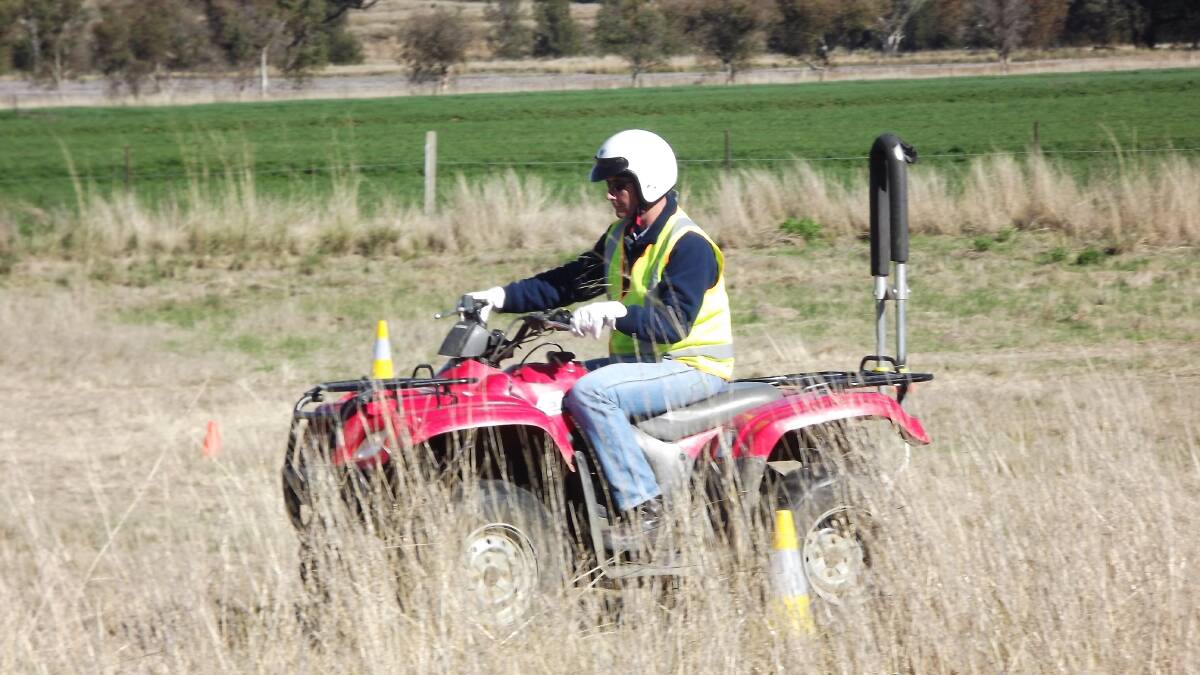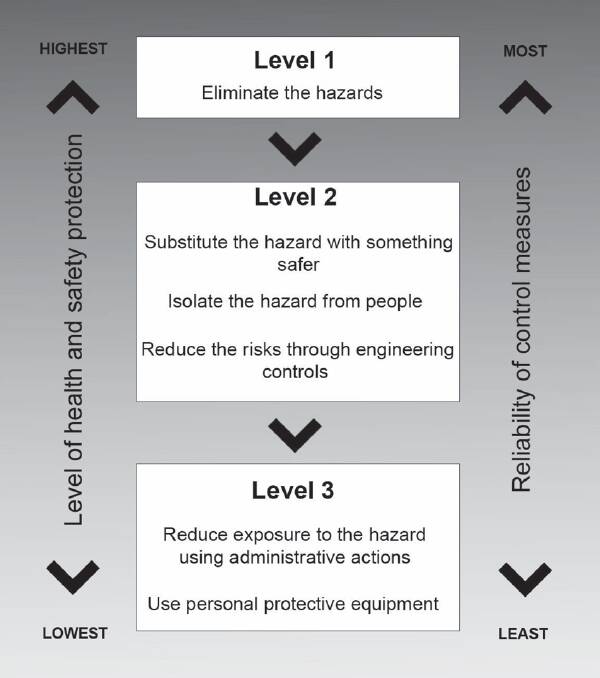
THE GLOVES are off in the quad bike safety debate, with the automotive industry issuing a strongly worded media release implying the consumer watchdog is experimenting with peoples lives.
Subscribe now for unlimited access.
or signup to continue reading
The release, which last week was widely circulated and re-published, was initially issued by the Federal Chamber of Automotive Industries (FCAI) as an advertising feature.
It claimed industry, dealers and farmers had united to fight the proposed engineering changes to quad bikes.
“All-Terrain Vehicles (ATV) manufacturers, dealers and farmers are uniting to fight proposed engineering changes to quad bikes,” it said.
“Fearing they could do more harm than good.”
The Australian Competition and Consumer Commission (ACCC), National Farmers Federation (NFF) and Farm Safe Australia have all refuted claims within the release, in particular that it represents the view of farmers.
What the ACCC is proposing would introduce unproven engineering characteristics in a live experiment with real humans
- Mark Collins, FCAI
The media release went on to say the ACCC was incorrect in “pushing” for mandatory crush protection devices to be fitted to ATVs.
“Industry research and other survey data show that they can cause as many injuries as they may prevent,” it said.
In the release, FCAI, ATV manager Mark Collins said there was comprehensive evidence that other safety measures, including making helmets obligatory, keeping children off adult-sized quad bikes and not carrying passengers on single-seat quad bikes, would cut deaths by more than 50 per cent.
“There is no conclusive scientific evidence that CPDs (crush protection devices) improve safety,” he said.
“In fact, new independent data shows they can cause just as many serious injuries as they may prevent.”
“On the other hand, the FCAI recommendations, based on real-world evidence, could happen quickly, easily, at minimal cost and begin saving lives immediately.”
“What the ACCC is proposing would introduce unproven engineering characteristics in a live experiment with real humans.”
ACCC response
Refuting the claims made by the FCAI, ACCC, deputy commissioner, Mick Keogh said there was no evidence introducing crush protection devices would make quads less safe.
Mr Keogh said the industry evidence, referred to by the FCAI, was based on computer simulations of potential accident situations funded by the automotive industry.
“Firstly they are not real-life situations,” he said.
“In all the fatalities that have occurred over recent years, there has been only one which involved a vehicle fitted with a roll-over protection device. The investigation into that death was very clear the person was thrown clear of the vehicle and struck their head. The fatality was not caused by the device.”
Coronial inquests
In the FCAI release, Mr Collins said, of three coronial inquests investigating 29 deaths on ATVs in Australia, none had recommended fitting crush protection devices.
However, Mr Keogh said the full coronial reports were quite extensive and canvassed a range of measures.
“If you read them in full, they express a need to find better options to make these vehicles safer,” he said.
“People need to read the full coronial reports themselves, we are concerned they are being quoted very selectively.”
Training not enough
Mr Keogh said the ACCC focus was on the safety of the actual vehicle itself, rather then personal protective equipment (PPE) and training.
“The inter-departmental committee and the work the ACCC is doing is focused very much on quad bikes,” he said.
Mr Keogh said while there were legislative reasons for concentrating on the vehicle, more importantly there was solid information on injuries and fatalities which backed up putting safety controls on the bike itself.

“The first is, about half the deaths that occur on quad bikes are not quad bikes engaged in work,” he said.
“There has been some claims made that we can solve this problem with workplace health and safety laws.
“That really only applies to about half the fatalities that occur.”
The predominant age-group of those suffering fatalities in quad bike accidents are above 45 years old
- Mick Keogh, ACCC
Mr Keogh said another reason was the practicalities of enforcing personal protective equipment such as helmets.
“It is really difficult to police safety equipment and helmets in an off-road environment,” he said.
Mr Keogh said preventing fatalities could not be simply controlled through training, given the majority of incidents were not inexperienced riders.
“The predominant age-group of those suffering fatalities in quad bike accidents are above 45 years old.
“Over 25 per cent of quad bike deaths are riders aged 66 years or over.”
These vehicles have not been modified or changed at all over the last decade to improve their safety
- Mick Keogh
Mr Keogh said the notion that safety gear or training will significantly reduces fatalities does not stack up to proper analysis.
“When we talk about the deaths that have occurred, 60 per cent of them involved roll-overs,” he said.
“Essentially 60 per cent of the fatalities are the result of the person being crushed or asphyxiated as a result of the quad bike rolling on top of them.
“Helmets, for example, do not resolve that problem.”
Crush protection
Mr Keogh stood by the ACCCs recommendation the industry introduce mandatory crush protection devices.
“The ACCC has really worked on the nature of the injuries, the type of person affected by those injuries and what could amount to an effective remedy to improve the horrific injury and death toll these vehicles cause.
“More than twice the level of fatality per vehicle kilometre then for cars.
“These vehicles have not been modified or changed at all over the last decade to improve their safety.
“It is the view of the review team, without improving the safety of the actual vehicle, you won’t make a great deal of progress here.
“We were required to focus on the safety of the actual vehicle, that is the legislative responsibility of the ACCC.”
No rules
Mr Keogh said while children and teenagers should not be allowed to ride quad bikes, there was no simple way to enforce it.
“Presumably the states could say, under the age of sixteen year’s old, you cannot ride a quad bike,” he said.
“However I doubt there is even a legal framework to allow that to happen.
“Certainly, even if their was, the enforcement capacity of state governments is zero.”
Mr Keogh said the irony was, while motor vehicles and vehicles used on-road such as utes and dirt bikes, were subject to the Australian safety standards, quad bikes were not.
“It is not a registerable vehicle, so it falls outside the motor vehicle safety standard,” he said.
“All the advances in car safety, things like seatbelts, crumple zones and airbags.
“Have all been introduced by safety standards developed for motor vehicles.”
“That avenue is not available for quad bikes.”
The release quotes one farmer and one ATV dealer supporting the stance.
Not speaking for farmers
Farmsafe Australia Chair and NFF’s Workplace Committee Chair, Charles Armstrong said the views released by the FCIA did not have agricultural industry support.
He said the NFF and their 30 member bodies as well as Farm Safe Australia, unanimously support mandatory crush protection devices.
“The release talks about an ill-informed rush to implement crush protection devices,” he said.
“Well we have been pushing for then 15 years to get some action in terms of safety and crush protection devices. So I do not think it is an ill-informed rush.”


